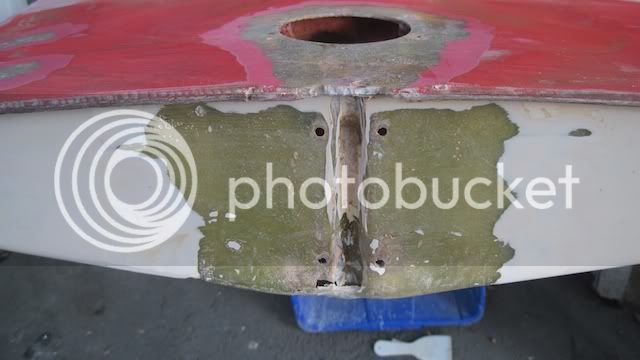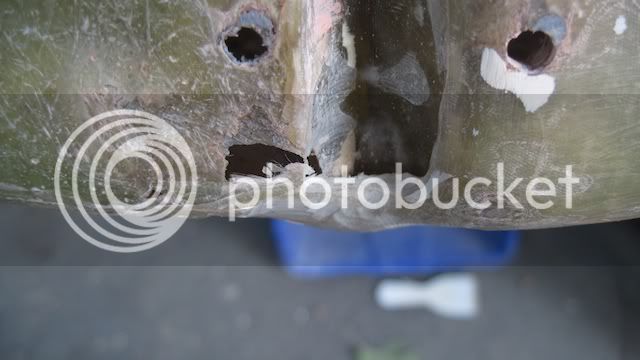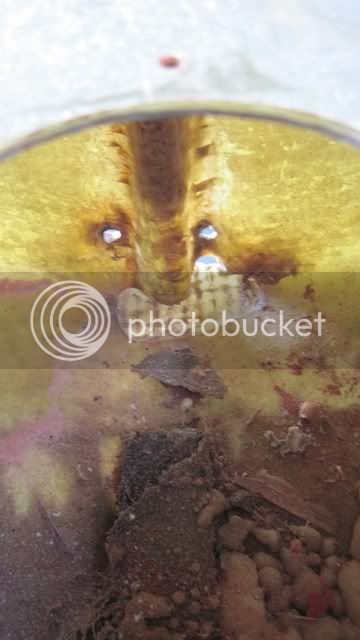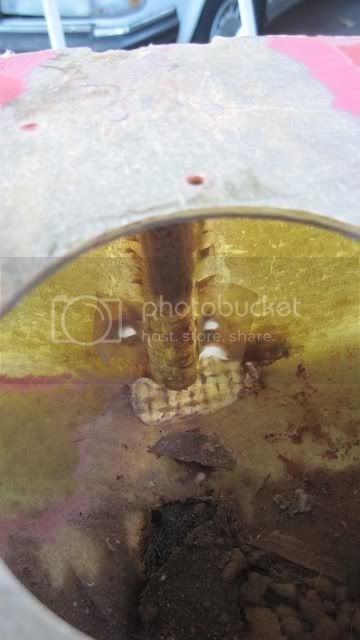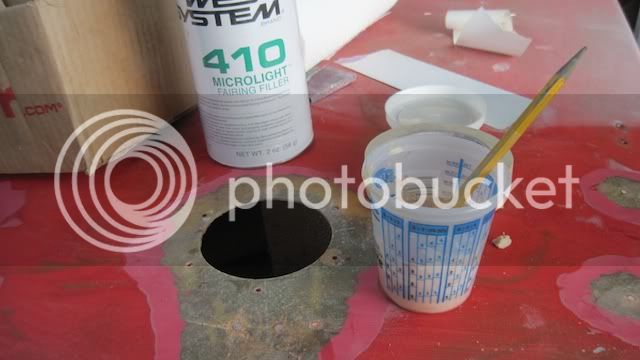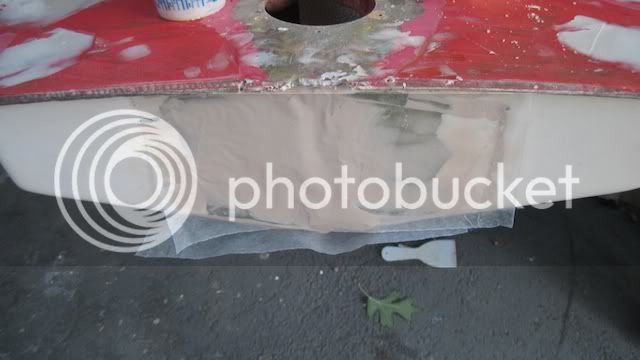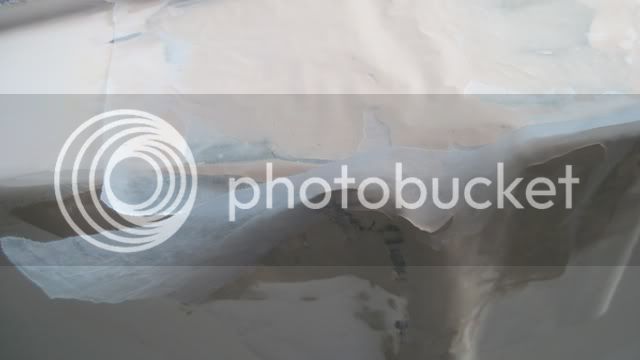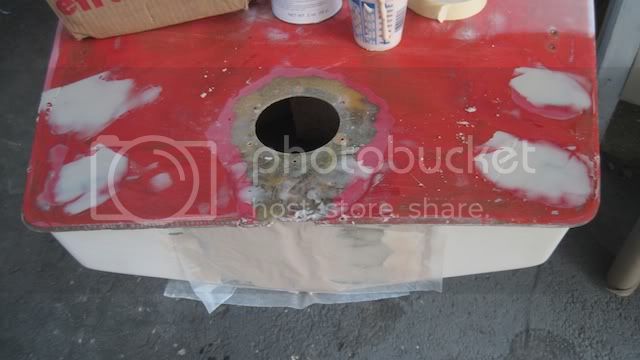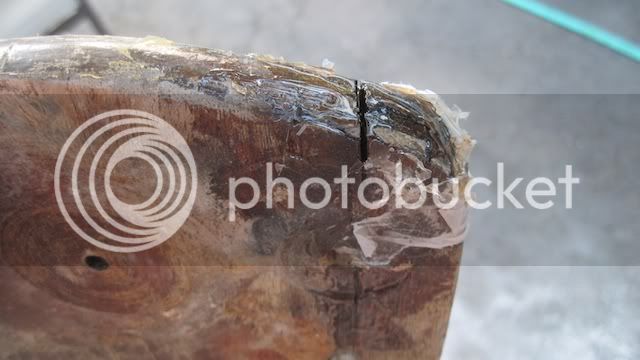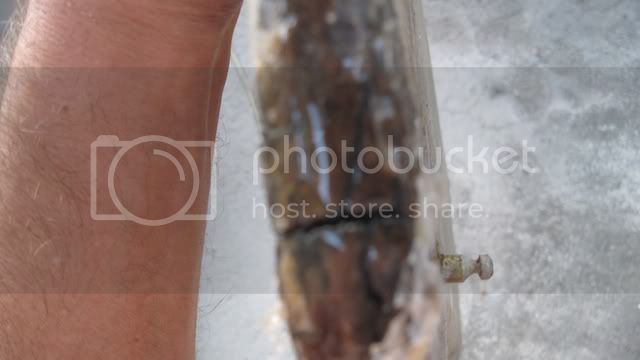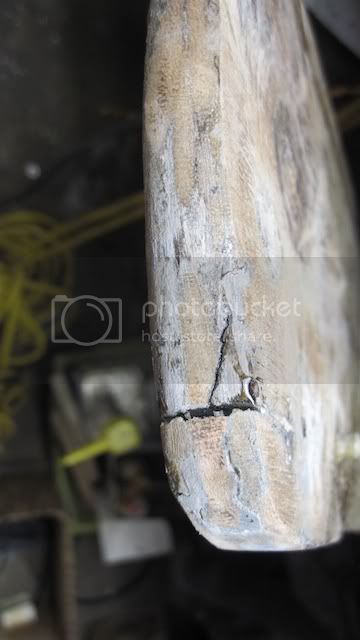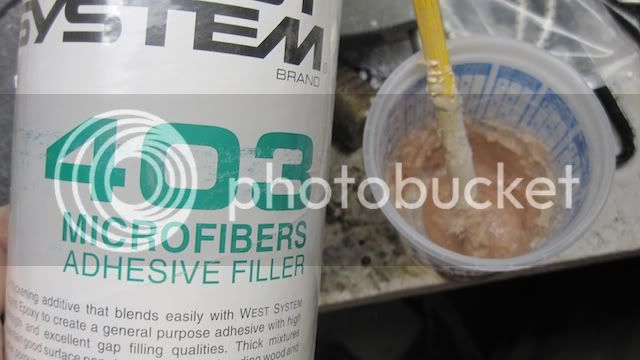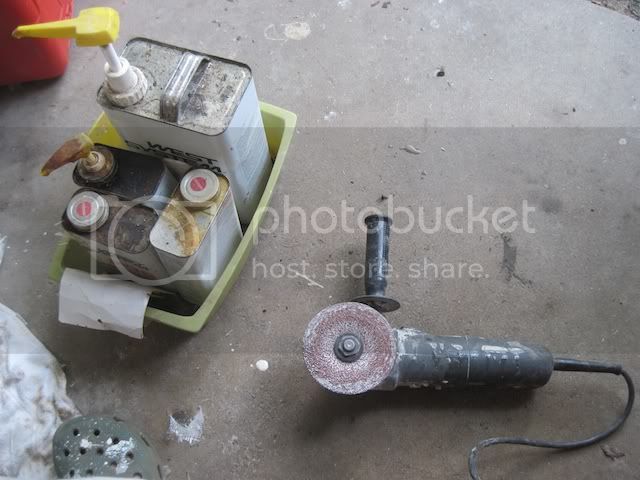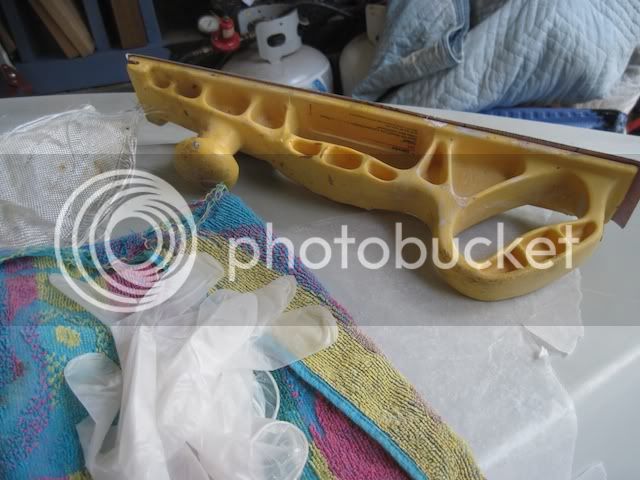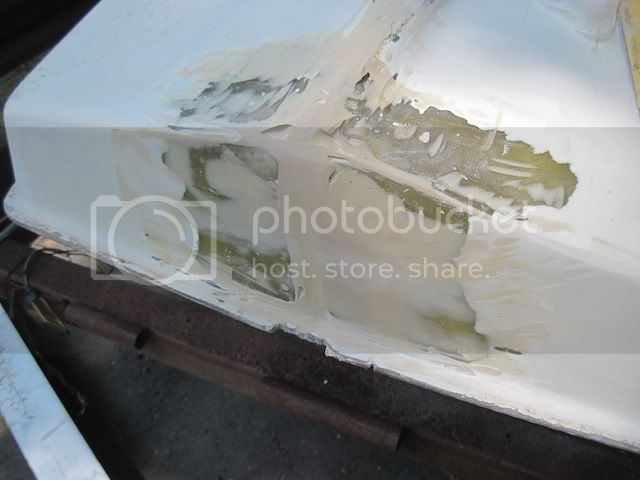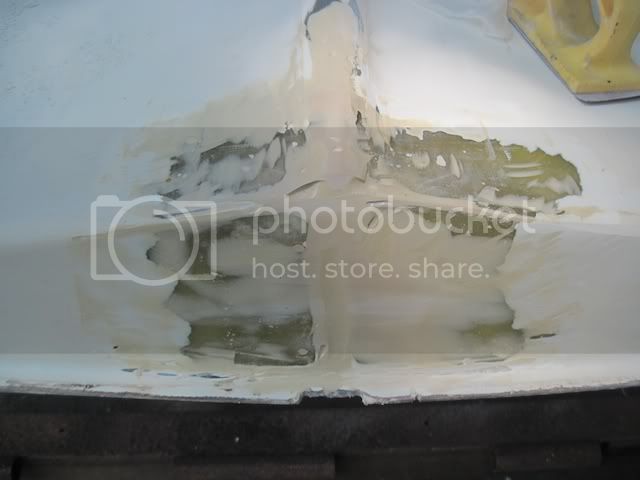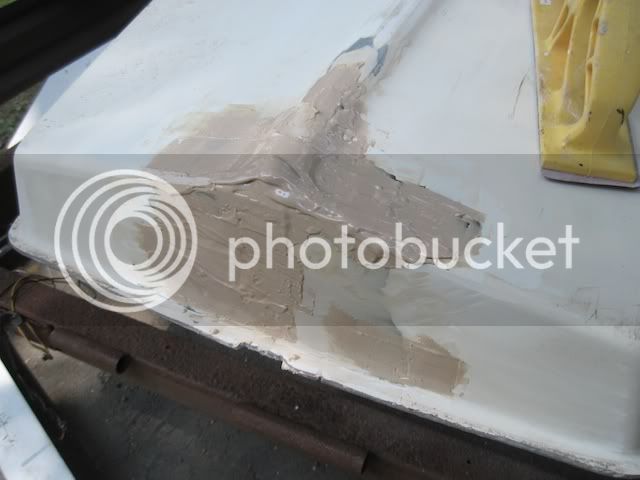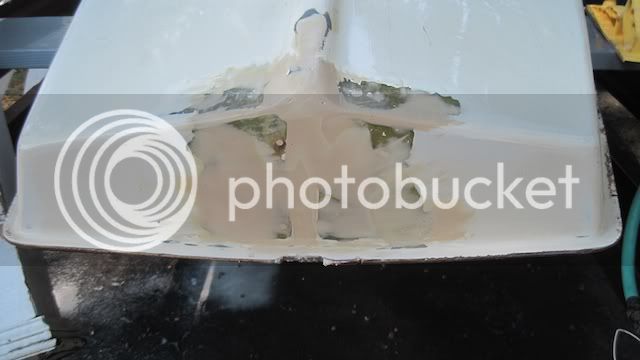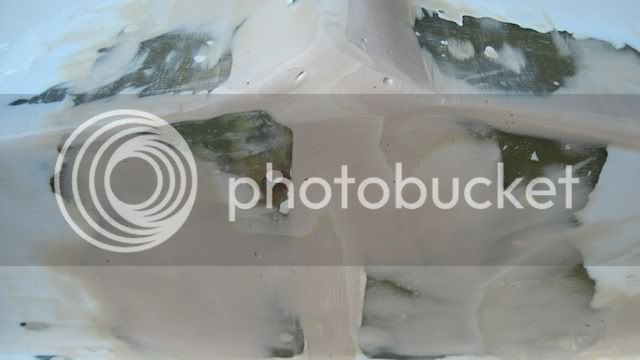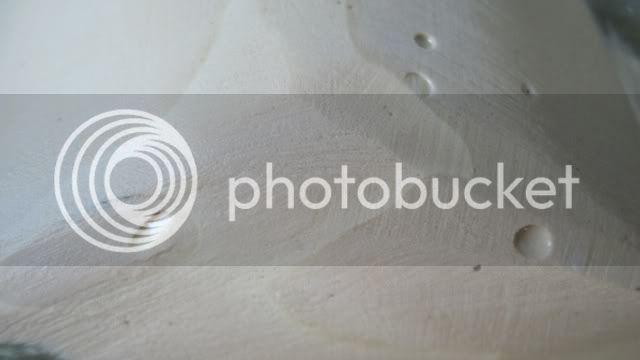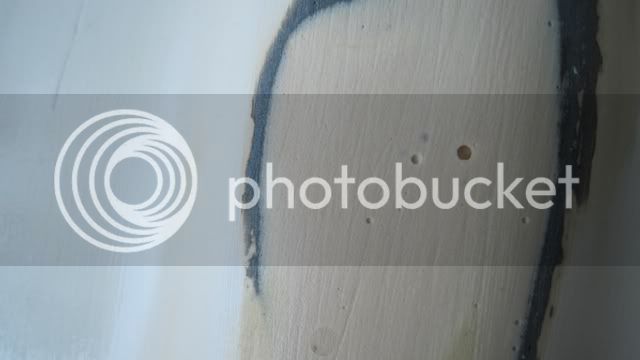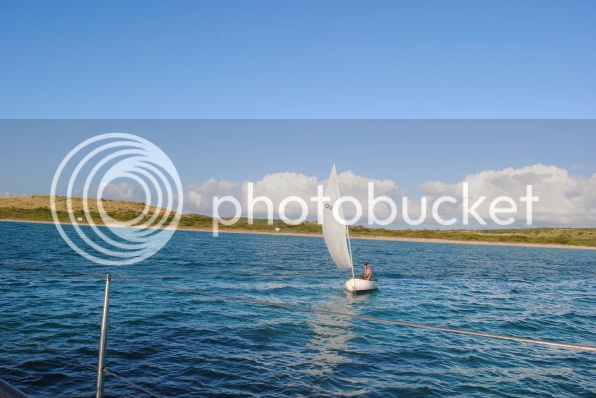NightSailor
Captain
Here is my $150 project boat I have named Canada because of the Red and White Paint scheme. I was thinking about parting the boat out, and then decided to restore it, but I enjoy that, not that I need another Sunfish--this is #7. I have a Canadian friend I was going to give the boat to, but he has moved. So I will probably keep this one.
Here is the boat with a nearly new sail which came with a 1983 Sunfish I bought which has only been used a few times. I have given some thought to keeping this sail on this boat. I have pried the deck drain off and popped off the inspection port cover. You can see the tape I installed to keep out the rain.
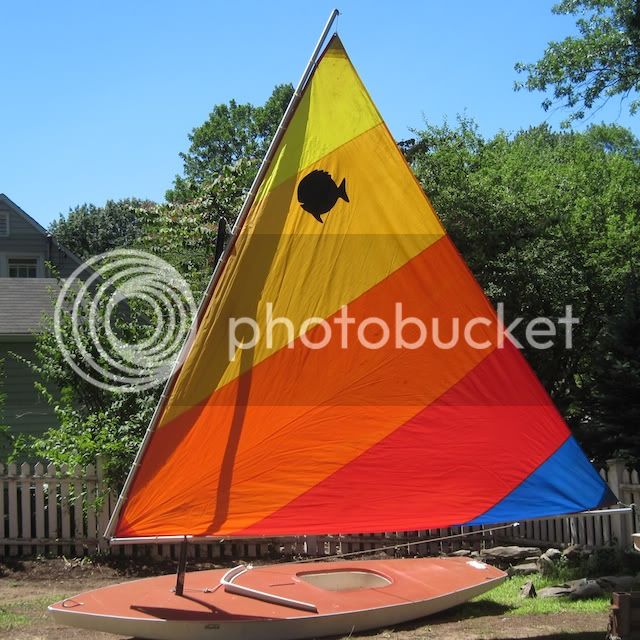
I have it's old sail, in ok shape, for sale on eBay at the moment and plan to put a brand new Canadian Maple Leaf sail on the boat.
This is the sail I'm putting on this boat. This is not my boat. My CANADA boat is down two pictures.
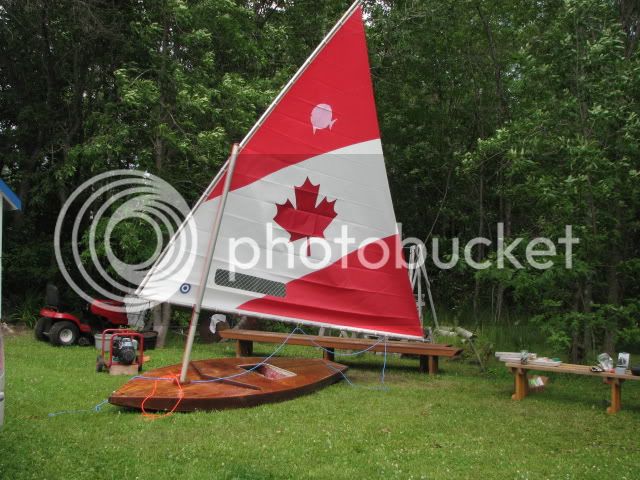
Here is it [below] striped of deck hardware:
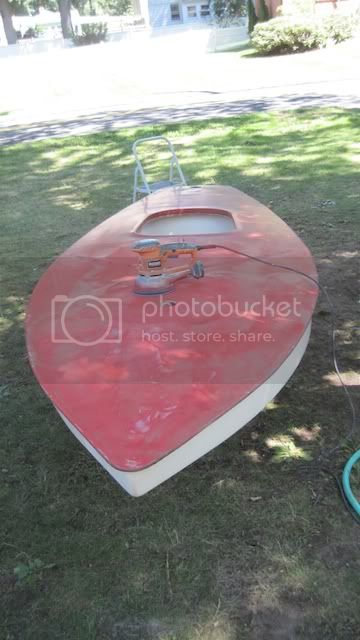
I need to look up the year it was made. Hull number 54,?59
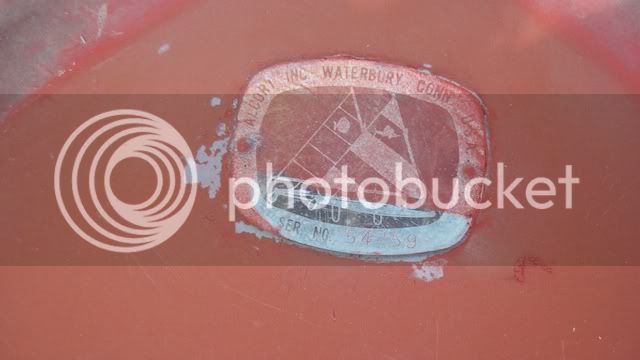
Serious Problems aft around the rudder replacement [below]. Not as bad as my other project SCUD, a 1968 Sunfish. My experience with scud will make this go fast. There is a pile of unsanded gelcoat that I'll have to sand flat to make the transom look good. Time to dig out my long board again. I suspect this is where the leaks were.
The entire deck flange looks good. I have not installed an inspection port to check out the daggerboard. I need to pressure test the boat at some point. I drained quite a bit of water out of the boat. I have an AC powered fan that I plan to bolt onto the forward end of the cockpit and pump air through the boat. It is getting hot and soon it will be a good time to dry out the boat in our sunny backyard.
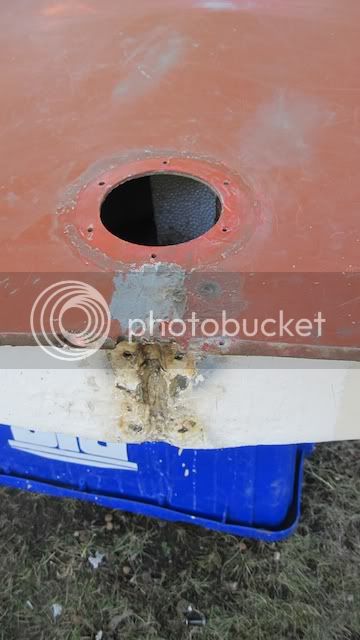
What the heck did they do back here [below]? Something was installed here. I found various areas covered with silicone [shown]. I have since scraped and then ground these areas down in preparation for their patches.
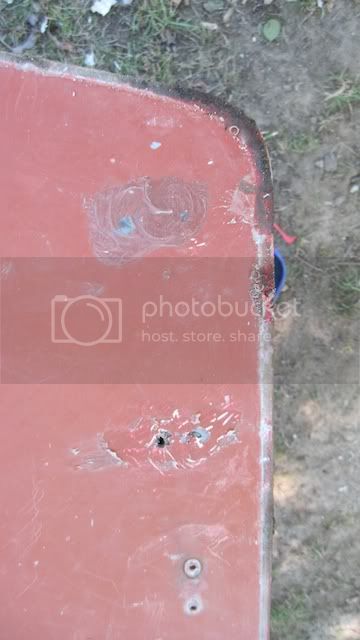
This looks deceptively good. It is not. Freshly washed after sanding, the deck is mostly in good shape. I don't think I'll be able to bring the gel coat back to life. More than likely I'll paint it this same color. This photo does show what I hope to achieve. The white coaming is in good shape. The rub rails are off and being polished at the moment. I think this work will go fast once I get the backing plate for the transom install and the deck access port glassed over and faired.
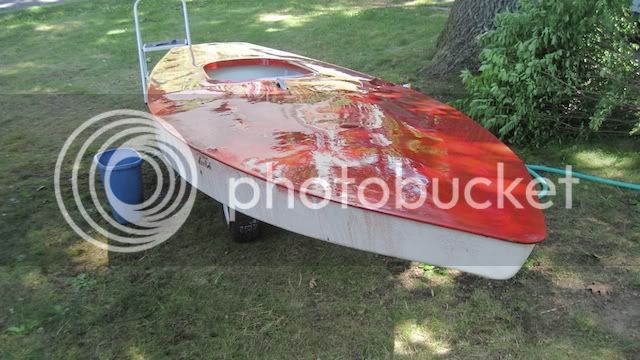
I will need to order some vinyl graphics for the name, and perhaps I can find Maple Leaf decals to put on the bows.
Here is the boat with a nearly new sail which came with a 1983 Sunfish I bought which has only been used a few times. I have given some thought to keeping this sail on this boat. I have pried the deck drain off and popped off the inspection port cover. You can see the tape I installed to keep out the rain.

I have it's old sail, in ok shape, for sale on eBay at the moment and plan to put a brand new Canadian Maple Leaf sail on the boat.
This is the sail I'm putting on this boat. This is not my boat. My CANADA boat is down two pictures.

Here is it [below] striped of deck hardware:

I need to look up the year it was made. Hull number 54,?59

Serious Problems aft around the rudder replacement [below]. Not as bad as my other project SCUD, a 1968 Sunfish. My experience with scud will make this go fast. There is a pile of unsanded gelcoat that I'll have to sand flat to make the transom look good. Time to dig out my long board again. I suspect this is where the leaks were.
The entire deck flange looks good. I have not installed an inspection port to check out the daggerboard. I need to pressure test the boat at some point. I drained quite a bit of water out of the boat. I have an AC powered fan that I plan to bolt onto the forward end of the cockpit and pump air through the boat. It is getting hot and soon it will be a good time to dry out the boat in our sunny backyard.

What the heck did they do back here [below]? Something was installed here. I found various areas covered with silicone [shown]. I have since scraped and then ground these areas down in preparation for their patches.

This looks deceptively good. It is not. Freshly washed after sanding, the deck is mostly in good shape. I don't think I'll be able to bring the gel coat back to life. More than likely I'll paint it this same color. This photo does show what I hope to achieve. The white coaming is in good shape. The rub rails are off and being polished at the moment. I think this work will go fast once I get the backing plate for the transom install and the deck access port glassed over and faired.

I will need to order some vinyl graphics for the name, and perhaps I can find Maple Leaf decals to put on the bows.

